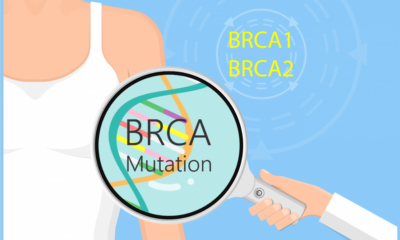
News
40% of all Ashkenazis eminate from just 4 Euro-mothers
ANT KATZ
A newly-published study shows that Ashkenazi maternal lineage derives largely from Europe. What’s more, 40 per cent of Ashkenazi Jews can trace their genetic line back to just four “founding” mothers – all of whom were European.
Past research done on male lineage has found that 50 to 80 per cent of DNA from the Ashkenazi Y chromosome originated in the Middle East. But the startling results from the new study of maternal DNA show that only a few maternal Ashkenazi lineages can be traced to Middle East origins.
The origin of the Ashkenazi Jews, who come most recently from Europe, has been the subject of many genetic studies which have shown that, on average, all Ashkenazi Jews are genetically as closely related to each other as fourth or fifth cousins.
The new study also debunks the conventional wisdom that many Ashkenazi Jews can trace their roots to the mysterious Khazar Kingdom that flourished during the ninth century between the Byzantine and Persian Empires – as none of the maternal DNA was found to have come from the North Caucasus.
Though the finding may seem intuitive, it contradicts the notion that European Jews mostly descend from people who left Israel and the Middle East around 2 000 years ago, says study co-author Martin Richards, an archaeogeneticist at the University of Huddersfield in England. Instead, he says, a substantial proportion of the population originates from local Europeans who converted to Judaism.
This suggests that intermarriage from the 12th century onwards was far more common than was previously believed.
Dr Harry Ostrer, a pathology, paediatrics and genetics professor at the Albert Einstein College of Medicine in New York and the author of “Legacy: A Genetic History of the Jewish People”, says little is known about the history of Ashkenazi Jews before they were expelled from the Mediterranean and settled in what is now Poland around the 12th century.
Now, with access to lineage traced through maternal or paternal DNA, researchers are able to build a more accurate picture to and more definitively answer questions about where Ashkenazi Jewry was for those 1 200 lost years.
The ORIGINAL PUBLICATION of the peer-reviewed work was in Nature Communications, which originally received the work on 11 July, accepted it on 4 Sept and published it on 8 October 2013 – see comments below.











Anthony
November 15, 2013 at 7:17 pm
‘Please cite the study.’
Online editor Ant Katz
November 17, 2013 at 8:41 am
‘Hi Anthony. Thanks for your interest and for your enquiry.
\nWe were certainly remiss in not referencing the source in the original article – something we would normally have done on the website. In this case, we originally prepared this article for our print edition.
\nThe ORIGINAL PUBLICATION of the peer-reviewed work was in Nature Communications, which first published it on 8 October 2013 – see addition above.
\nYou might be interested if you do have an interest in following up on this that we have just done a Google-search of “Martin Richards Ashkenazi Jews” which turned up 20,500 separate articles which have been written on the report since then. In our story we also quoted from the eminent Albert Einstein College of Medicine professor Dr Harry Ostrer who holds a number of chairs and is the author of \”Legacy: A Genetic History of the Jewish People.\”
‘